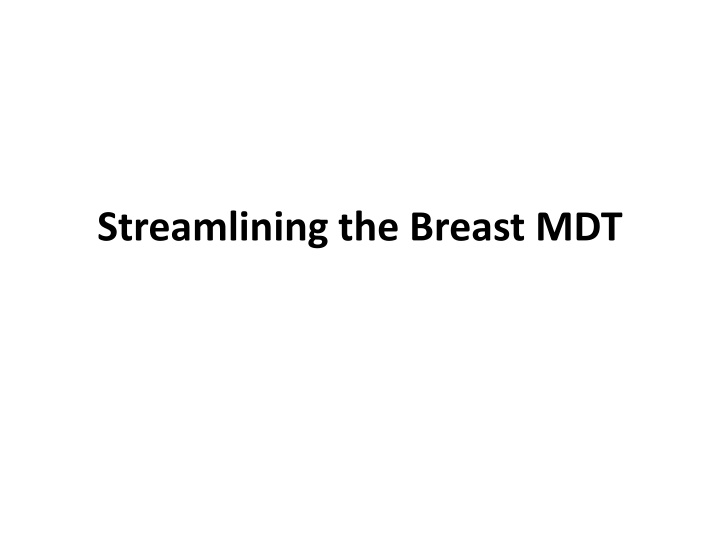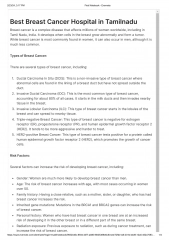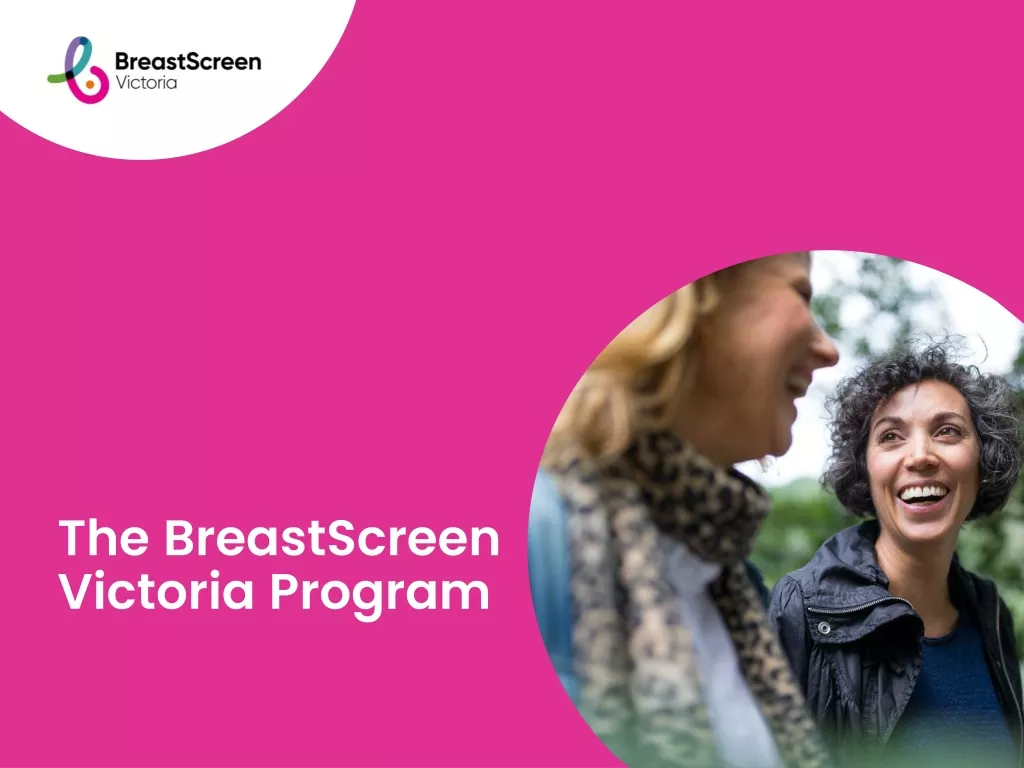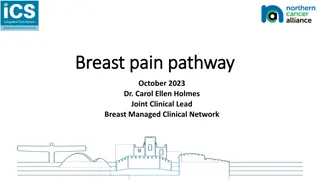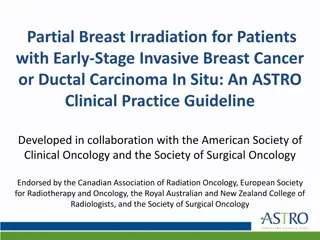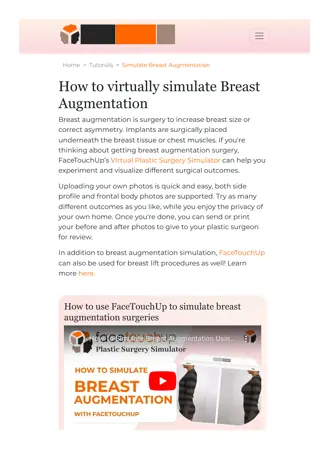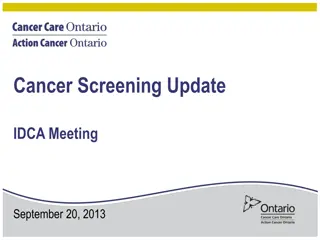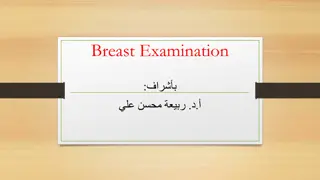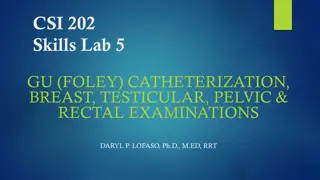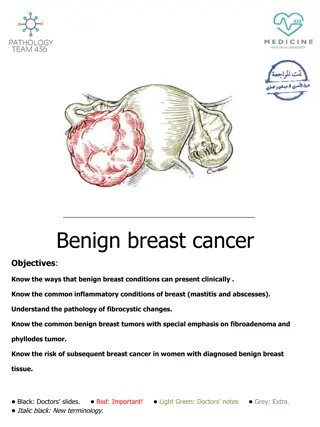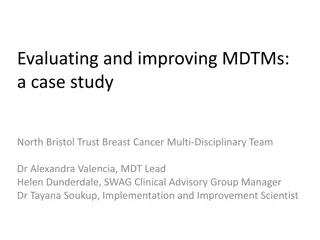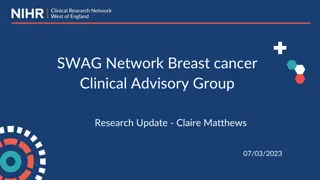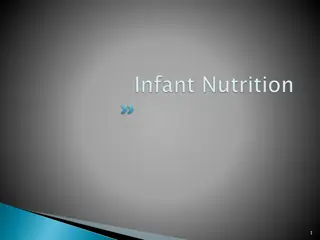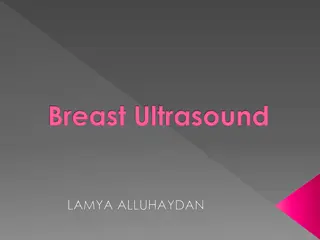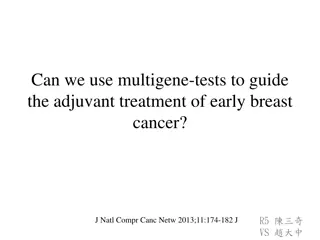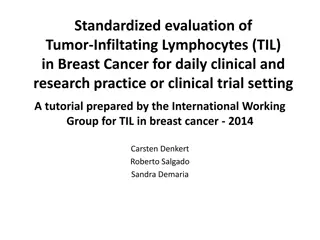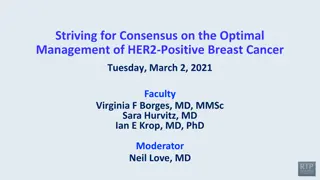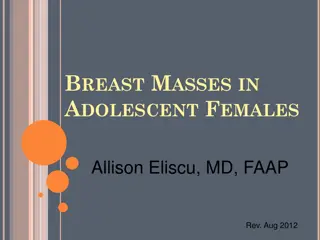Enhancing Breast Multidisciplinary Team Efficiency
The need for streamlining breast MDT processes is evident in the time-consuming complex cases and high costs involved. By implementing strategies like focusing on specific questions for complex cases, utilizing electronic systems, and improving preparation with relevant information, the MDT at RUH aims to improve efficiency and decision-making for patient care.
Download Presentation

Please find below an Image/Link to download the presentation.
The content on the website is provided AS IS for your information and personal use only. It may not be sold, licensed, or shared on other websites without obtaining consent from the author.If you encounter any issues during the download, it is possible that the publisher has removed the file from their server.
You are allowed to download the files provided on this website for personal or commercial use, subject to the condition that they are used lawfully. All files are the property of their respective owners.
The content on the website is provided AS IS for your information and personal use only. It may not be sold, licensed, or shared on other websites without obtaining consent from the author.
E N D
Presentation Transcript
Need for streamlining: Many of the outcomes for MDT are protocolled and require no discussion. The complex cases can now be very complex requiring potentially long discussions and input from all disciplines. Oncology time is a precious resource at present. The cost of the MDT is high given the numbers of representatives. Concentration decreases over time.
Purpose of the MDT Discussion between multi disciplines to determine best decision made for (? complex/ ? all ) cases. Ensure correct pathway for all patients with no drift Trials to be discussed Educational component.
Preliminary data collected for NHS Eng Recorded time for each patient for NHS England study Became clear that we were spending minimal time on many patients average 20-60 sec. Initial feeling: lets carry on with what we are doing
Who do you discuss? At present, general consensus at RUH Discuss every patient
Methods for Streamlining 1. Simple cases All information required to make a plan, available to be easily read. Provisional plans already entered 2. Complex cases Ensure have a specific question all information required to make a clinical decision is available 3. All oncology patients at start
Strategies to improve/ streamline MDT at the RUH A. Produced an electronic system to add patients with drop down box against categories. 1. 2. 3. 4. 5. 6. 7. 8. 9. 10. Expected benign biopsy ( R1-3) 11. Expected benign biopsy telephone results 12. Post op Benign 13. Other Post op Malignant. Her 2 result Complex radiology discussion ( CT , bone scan) Surgical/ Oncology discussion Metastatic patients Expected malignant core biopsy results ( R4, R5, B5) Breast MRI results MDT approval required (eg Risk reduction surgery) Pts for registration only
B. Improve the preparation If the preparation included provisional outcomes for all cases, with all relevant information available for oncology to ratify this will dramatically quicken the straightforward cases.
xxxxxxxxx xxxxxxxxx xxxxxxxxx xxxxxxxxx xxxxxxxxx
Preparation 4 hours preparation time from a senior member of the MDT in order to look up results, documents and proposed plans. All expected benign cases will be prepared by the breast radiologist. Preparation can be sent to MDT co-ordinators prior to the meeting so less time communicating outcomes and typing.
During the meeting The MDT will be able to sense check and ratify. Make changes as appropriate
Potential Risks Having one member of the team doing the preparation may include odd mistakes and need to rely on all members of the team being actively engaged to note these. A single team member may make a similar mistake each week which may not be noticed by the rest of the MDT. Having one member of the team making provisional decisions may lead to bias in treatment pathways.
Example Postop Malignant Any previous treatment neoadjuvant or from previous breast cancer Side Grade, type, ER Her2 Size, nodes, margins Relevant PMH / FH Plan: (a) Provisional plan to be recorded (b) Provisional oncology appointment to be recorded (c) Follow up plan: BCS Mammogram, MRI, and CT follow up eg Right G2 ILC ER 2/8, Her 2 + 40 mm clear margins 0/2LN Plan: For chemo, herceptin, RT: FU imaging BCS MGM with MRI annually for 3 years M04
Expected malignant ( e.g. R5, R4 core biopsy, ABS B5) (a) Side, Size, number of foci if greater than 1, Grade, type, ER, Her 2 if known, LN (b) TNM staging (c) PS (d) Relevant PMH (e) Provisional plan
Complex radiology discussion ( CT, bone scan etc) Reason for the scan ( what question is being asked) Relevant previous pathology and treatment Relevant PMH Radiology to present result
How are we doing so far All patient requiring oncology input discussed between 8.30 and 9.30am most of the time Whole meeting length between 8.30 and 10- 10.30am. Still some adjustments with the prep. Perhaps we might get to the stage where we stop discussing the simple cases?
